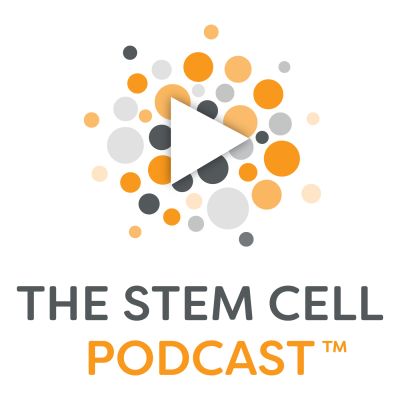Join Drs. Daylon James and Arun Sharma as they discuss the latest stem cell research, and interview some of the brightest minds in the field.
https://stemcellpodcast.com
Ep. 44: “Saratoga Stem Cell” Featuring Greg Smith, Christy Allen, Samantha Morris and Evangelos Kiskinis
Guest: In this episode we discuss topics ranging from a chemical in vegetables that can destroy cancer stem cells, chewing gum to prevent signing a song over and over, the first report of germ line gene editing in human embryo, neuronal hyperactivity and neutral stem cells, and the discovery of a new pluripotent stem cell. The second half of the show comes live from The Next-Gen Stem Cell Conference in Saratoga NY, where we interview four scientists about their work and conference experience. Resources and Links Could High Blood Sugar Be a Cause of Alzheimer's Disease? – Scientists suspect one of the drivers that causes the complex brain changes that lead to Alzheimer’s disease is the accumulation of plaques of a faulty protein called beta-amyloid and that too much sugar in the blood can speed up the production of this protein. Activin A Directs Striatal Projection Neuron Differentiation of Human Pluripotent Stem Cells – Activin A induces lateral ganglionic eminence (LGE) characteristics in nascent neural progenitors derived from human embryonic stem cells and induced pluripotent stem cells in a sonic hedgehog-independent manner. Take a Deep Breath: Patients Find Relief through 3D Printing – A patient suffering from the rare condition, tracheobronchomalacia was treated with the use of 3D printing to construct a splint that would support the weakened trachea. Relaxed DNA May Contribute to Aging – Analysis from scientists suggests that loosely wrapped DNA underlies the accelerated physical decline of Werner syndrome and promotes aging in the rest of the population. U of M Institute Discovers How Aspirin Fights Cancer – Researchers discovered that aspirin might exert its chemopreventive activity against colorectal cancer, at least partially, by normalizing the expression of epidermal growth factor receptor in gastrointestinal precancerous lesions. Bat-Winged Dinosaur Discovery Poses Flight Puzzle – This article describes the fossilized remains of a small, feathered dinosaur, unearthed in eastern China, that probably sported bat-like wing membranes and might have been able to glide or fly short distances. Toward Efficient Enzymes for the Generation of Universal Blood through Structure-Guided Directed Evolution – Researchers describe a way to transform A and B blood into a type that, like O, could be universally donated by using enzymes to remove certain sugars in the blood. The Search for Satiety Neurons and How to Short Circuit Hunger – A team of researchers has found that a melanoncortin 4 receptor-regulated (MC4R) circuit serves as the neural link that inhibits and controls eating by promoting fullness and removing the almost painful sensation of grating hunger. Finding the Body Clock's Molecular Reset Button – Researchers at McGill and Concordia universities in Montreal, report that the body's clock is reset during the process known as phosphorylation, when a phosphate combines with a key protein in the brain. Chew Gum to Get Rid of That Song in Your Head: Study – This article reveals that chewing gum could be the best way to get rid of the annoying songs that play in our heads which some call as earworms, according to a team of researchers at the University of Reading in the U.K. Chinese Researchers Have Genetically Modified a Human Embryo—and Many Scientists Think They’ve Gone Too Far – This article discusses the research conducted by a team of scientists in China on altering the DNA of human embryos which many scientists contend that newly developed genetic-engineering methods need to be studied further in animals before running the risk of unpredictable human mutations and scarier developments in human evolution. Scientists Stumble Across Unknown Stem-Cell Type – According to this article, a newly discovered type of stem cell could help provide a model for early human development — and, eventually, allow human organs to be grown in large animals such as pigs or cows for research or therapeutic purposes.
